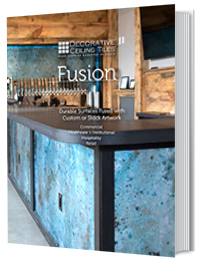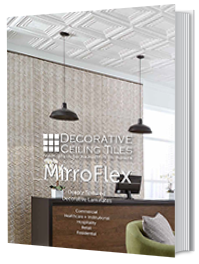How to Install Baseboard Molding Without a Nail Gun
Written by Milan Jara on 19th Oct 2022

Baseboard molding protects the wall and elevates the look of any room. Read on to learn how to install baseboard molding without a nail gun.
Baseboard trim or baseboard molding complements the space where the wall meets the floor. Just like crown molding complements the top, so baseboard molding complements the bottom.
Many readers ask, "Do I need a nail gun to install a baseboard trim?" Is it even possible to install baseboard molding if you don’t have a nail gun? The simple answer is yes. Armed with a can-do attitude, some key supplies, and this guide, you can complete the final part of creating an aesthetically pleasing home from top to bottom.
What Is a Baseboard?
Baseboards are hardwood or vinyl boards that cover the bottom of interior walls. You might have noticed a tiny gap between the floor and the wall's surface that is often unequal. Baseboards allow us to level this area, and there are a few installation methods you can use, including screws, nails, or glue. Nails are still the most popular technique, though.
Many standard baseboards on the market are now plastic, but composite materials like urethane baseboard moldings are preferred. With material variations come changes in the shape; you might see square, circular, or a variety of other shapes. Let's talk more about installing baseboard molding without using a nail gun.

Installing Baseboards Without a Nail Gun
Who says you can't put up baseboards if you don't have a nail gun? Installing baseboards, quarter round molding, and shoe molding will enhance your home's appearance if you have the right equipment and supplies. You will need:
- Tape measure
- Miter saw
- Hammer
- Nail set
- Glue for baseboards
- Spirit level (four feet)
- Knife or cutter
- Sandpaper
- Chalk or a pencil
1. Remove the existing baseboard.
Start by using your knife to cut away the current baseboard. Cut through the trim's paint or glue first. Use caution and be gentle when completing this step to minimize damage to the wall and floor. You may remove the trim or glue once you finish slicing through the baseboard.
2. Gauge the space and cut the new baseboard.
You must take the room's perimeter first—the sum of the lengths of each wall. For the best fit, cut the baseboard trim to the size of the space you just measured. If the trim extends too far over the wall's measurement, you can easily cut it.
This phase is by far the most difficult, in our opinion. You need a lot of time to complete this process. Measure twice and cut once. That’s the golden rule of any DIY molding job, baseboard molding installation included. Here are more brilliant woodworking tips to aid you in future undertakings.
You now need to purchase the new baseboard material. Choose molding that resembles or complements your wall panel for the best results. As a bit of special advice, buy baseboard trim that is a bit longer or bigger than you need. If your measurements are incorrect, you will have enough material to cover it.
3. Determine if the floor is level and adjust accordingly.
Determining if the floor is level is one of the most crucial factors you should consider. Avoid leaving a space between the floor and the baseboard. Use your four-foot spirit level to locate uneven floor areas.
Installing the baseboard correctly depends on making sure the entire area is level. Aim for the lowest point on the wall, and position the baseboard there. Next, follow the baseboard trim by starting at the top and working your way up to each corner. Make marks using chalk to help you when you install the baseboards.
4. Make baseboard scribbles.
After leveling is complete, secure the baseboard with a hammer and two nails, ensuring you position the baseboard on the floor. Start scribbling with a pencil by tracing a horizontal line from the flooring to the baseboard. Then, remove the baseboard and cut it following the scribe you made.
5. Gauge and trim the outside corners.
Obtaining the outside corner measurements is the next step. Cutting the miter joints requires preparing the miter saw.
You should create an exterior boundary that is 90 degrees inclined. To ensure you have enough if you make a mistake, don’t cut the angle at precisely 45 degrees. Leave a little extra material so you can fit and adjust as needed. Remember, you can cut or trim it whenever you need to obtain the proper specifications, but you can’t add back material that you removed.

6. Apply baseboard adhesive.
You must apply adhesive to the back of the baseboard and the molding. Distribute it evenly using a caulking gun.
7. Use the hammer to attach the baseboard molding.
You may now attach the baseboard after finishing the area's preparation and the baseboard. Bear in mind that this step requires caution.
Using finishing nails and a hammer, secure the baseboard molding to the wall at the studs. Use a wall stud finder to work most effectively. You may also perform a knock test on the wall to identify the empty spaces between the studs.
Insert two finishing nails into each stud at the base of the baseboard. Using a nail set, hammer the nails in at a steep angle. Fill the holes with glue. When the glue dries, use sandpaper to smooth it.
We recommend applying a tiny amount of wood glue on the outside corners to strengthen the binding, but this is optional.
8. Adding the Last Touches
Examine the baseboard moldings to ensure that they are securely fastened. Trim any leftover pieces, deal with the corner where the two moldings connect, and use these methods to fill any gaps. Use sandpaper to give it a final polish and remove any rough edges, and fill any holes with wood putty. Your baseboards and trim are now perfect for painting.
Final Thoughts
There are a few alternative methods to install a baseboard if you don’t have a nail gun. As mentioned, using nails and a hammer is the most popular option, but you can also use screws and a screwdriver. Another option is to use a pneumatic stapler, a device that drives staples into the molding using pressurized air. Regardless of your chosen method, make sure to have quality baseboard trims that complement your house’s interior. Check out this catalog of baseboard trims and take your pick.




